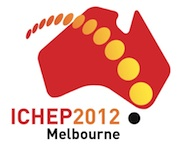Speaker
Dr
Anastasia Grebenyuk
(DESY (DE))
Description
Scaled momentum distributions for the strange hadrons K0s and Lambda/Lambdabar were measured in deep inelastic ep scattering with the ZEUS detector at HERA using an integrated luminosity of 330 pb-1. The evolution of these distributions with the photon virtuality, Q2, was studied in the kinematic region 10 < Q2 < 40000 GeV2 and 0.001 < x < 0.75, where x is the Bjorken scaling variable. Clear scaling violations are observed. Predictions based on different approaches to fragmentation were compared to the measurements. Tuned leading-logarithm parton-shower Monte Carlo calculations interfaced to the Lund string fragmentation model describe the data reasonably well in the whole range measured. Next-to-leading-order QCD calculations based on fragmentation functions, FFs, extracted from e+e- data alone,fail to describe the measurements. The calculations based on FFs extracted from a global analysis including e+e-, ep and p$ data give an improved description. The measurements presented in this paper have the potential to further constrain the FFs of quarks, anti-quarks and gluons yielding K0s and Lambda/Lambdabar strange hadrons.
The production of neutral strange particles is studied at low Q2, using deep-inelastic scattering events recorded with the H1 Detector at HERA. The production cross sections are presented differentially as a function of several kinematical variables in the laboratory and the Breit frame. Moreover, the strangeness production rate is compared to the equivalent rate of charged particles in a similar phase space. The H1 data are compared to theoretical predictions, based on leading order Monte Carlo programs with matched parton showers, with different values of the strangeness suppression factor.
The electron-proton collider HERA allows deep-inelastic scattering (DIS) at very small Bjorken-x of about 10^-5. At such small x new parton dynamics beyond DGLAP are expected to become important. Charged particle spectra are measured in DIS (Q^2 > 5 GeV^2), in different regions of pseudorapidity, using the increased statistics of HERA-2. The measurements are compared to simulations based on different Monte Carlo generators. It is shown that the region of small transverse momenta is primarily sensitive to hadronisation, whereas the region of large transverse momenta is mainly driven by perturbative parton radiation. The observed hardness of the transverse momentum spectra, when compared to different model predictions, can be interpreted as supporting the idea of parton dynamics beyond DGLAP.
The production of photons at very small angles with respect to the proton beam direction is studied in deep-inelastic positron-proton scattering at HERA. The data are taken with the H1 detector in the years 2006 and 2007 and correspond to an integrated luminosity of 126 pb−1. The analysis covers the range of negative four momentum transfer squared at the positron vertex 6 < Q2 < 100 GeV2 and inelasticity 0.05 < y < 0.6. Cross sections are measured for the most energetic photon with pseudorapidity η > 7.9 as a function
of its transverse momentum p_T^lead and longitudinal momentum fraction of the incoming proton x_L^lead. In addition, the cross sections are studied as a function of the sum of the longitudinal momentum fraction x_L^sum of all photons in the pseudorapidity range η > 7.9. The cross sections are normalised to the inclusive deep-inelastic scattering cross section and compared to the predictions of models of deep-inelastic scattering and models of the hadronic interactions of high energy cosmic rays.
Author
Dr
Anastasia Grebenyuk
(DESY (DE))
